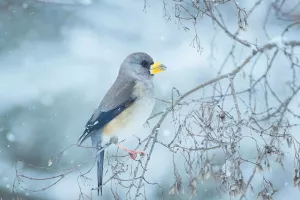The evolution of the barn swallow, a ubiquitous bird found in bridges and shacks around the world, may have been more closely related to humans previously thought, according to a lately study from the University of Colorado Boulder.
The research, published this week in Molecular Ecology, provides preliminary insights into how the barn swallow and its subspecies evolved alongside, but independent of, humans.
These new results make it one of the only known species to develop in this way, aside from microbes such as bacteria or viruses, overturning previous assumptions that barn swallows evolved before human settlement.
"Humans may be an important part of this story," said study co-author Rebecca Safran, associate professor of ecology and evolutionary biology (EBIO) at CU Boulder.
"There are not many studies that can pinpoint the exact impact of humans, so here this coincidence of human expansion and permanent settlement and the expansion of groups that really depend on humans is compelling."
Barn swallows are found in the northern hemisphere and are characterized by mud pot nests made almost entirely of man-made structures.
However, despite their ubiquity, their evolutionary history, the timing of their expansion from North Africa (where they originated), or how the six subspecies evolved physically and behaviorally differed, yet remained nearly genetically identical.
Previous research published in the Royal Society of London and Proceedings of Molecular Phylogenetics and Evolution investigated these questions, finding that distinct subspecies split long before human settlement.
However, this new study brings the subject to life by examining the whole genomes of 168 barn swallows from the two most evolutionarily distant subspecies: H. r.
Egyptian savignii (a non-migratory species living along the Nile) and H. r. erythrogaster of North America (a North American species that migrates seasonally to South America).
This data is then analyzed using more sophisticated computing resources and methods than previously available - 100,000 times larger than previously used datasets.
This allowed the researchers to obtain a more complete picture, bringing the time of barn swallow differentiation, or speciation, (that is when the barn swallow subspecies separated) closer to when humans began building structures and settlements.
"Previous research was looking at the potential human impact on population size," said Chris Smith, a graduate student in the EBIO and Interdisciplinary Quantitative Biology Program and the study's lead author.
“Our results show more substantial connections to humans."
These new preliminary findings also suggest that this progressive link may form through a "founder event," when a small number of individuals in a species take over a new environment and can expand their new population there due to availability.
With resources and a lack of competitors, for barn swallows, this event can happen quickly when it enters a relatively empty new environment: with humans.
"Everyone is wondering how you study speciation. It's seen as a long-term, million-year (process), but in barn engulfment, we're not talking about differentiation over thousands of years," Safran said. "Things are moving really fast."
Smith agrees: "It's interesting to study speciation in its infancy."


